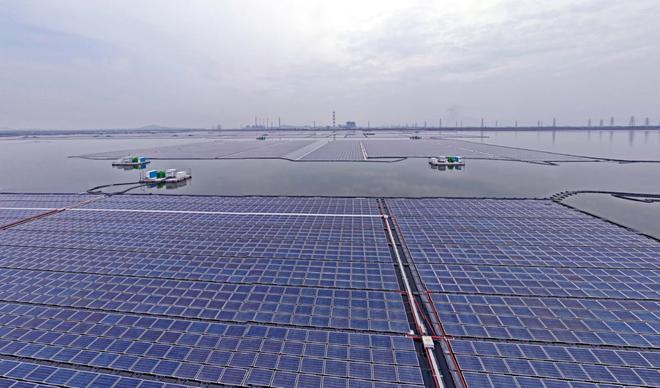With declaration of the commercial operation of the last 20 megawatt capacity part of the NTPC-Ramagundam floating solar power plant at zero hours on Friday, the country’s largest (100 MW) floating solar power plant, till date, has become fully operational.
Regional Executive Director (South) of NTPC Naresh Anand has congratulated the NTPC-Ramagundam team on achieving the milestone and reiterated NTPC’s commitment for renewable energy. He stated that NTPC Southern Region was augmenting the renewable energy capacity with the addition of the last leg of the 100 MW floating solar plant at Ramagundam.
With the full capacity operation of the 100-MW solar PV project at Ramagundam, the total commercial operation of floating solar capacity in Southern Region has gone up to 217 MW. The NTPC Southern Region had already declared commercial operation of 92 MW floating solar at Kayamkulam (Kerala) and 25 MW floating solar at Simhadri (Andhra Pradesh), Mr. Anand explained.
Largest in the segment in the country, the 100-MW floating solar project at Ramagundam boasts advance technology as well as environment-friendly features. Constructed at a cost of ₹423 crore through BHEL as EPC (Engineering, Procurement and Construction) contract, the project is spread over 500 acres of NTPC-Ramagundam reservoir.
Divided into 40 blocks, each segment has capacity of 2.5 MW. Each block consists of one floating platform and an array of 11,200 solar modules. The floating platform consists of one inverter, transformer, and a high-tension breaker. The solar modules are placed on floaters manufactured with HDPE (High Density Polyethylene) material.

The entire floating system is being anchored through special HMPE (High Modulus Polyethylene) rope to the dead weights placed in the balancing reservoir bed. The power is being evacuated up to the existing switchyard through 33KV underground cables.
This project is unique in the sense that all the electrical equipment including inverter, transformer, HT panel and SCADA (supervisory control and data acquisition) are also on floating ferro cement platforms. The anchoring of the system is bottom anchoring through dead weight concrete blocks.
The floating solar panels of the power plant would reduce the evaporation rate of water from the reservoir to an extent of 32.5 lakh cubic metres per year. The water body underneath the solar modules would also help maintain the ambient temperature thereby improving the efficiency and generation. It would also save coal consumption of 1.65 lakh tonnes a year and carbon dioxide emission to the tune of 2.1 lakh tonnes a year.







